URI vs URL: Understanding the Differences and How to Use Them Correctly
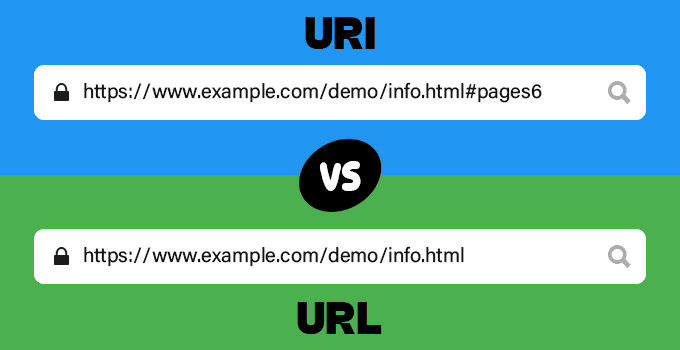
In this guide, we are going to learn URI vs URL, what are URI and URL?, the differences between them, when to use URI? and when to use URL?, best practices for using them, their future, and much more.
In the internet era, URI (Uniform Resource Identifiers) and URL (Uniform Resource Locators) are the basic concepts but play an important role in identifying and accessing resources. Both terms are often used reciprocally and have different meanings and usages. However, they are both used to pinpoint unique resources like; web pages, files, or any other digital utility.
A URI is a wide term that envelops URL and URN (Uniform Resource Names). It serves as a unique identifier for resources, allowing systems to recognize one resource from another. An URL is a type of URI that provides a resource’s identification and location. In short, all URLs are URIs, but all URIs are not URLs.
A clear understanding of the URI and URL is essential if you are a web developer, software engineer, or anyone involved in the digital world. Misusing or confusing the terms can cause broken links, technical errors, and security breaches. After going through this guide: URI vs. URL, you will never have any questions about these terms and their usage.
What is URI vs URL?
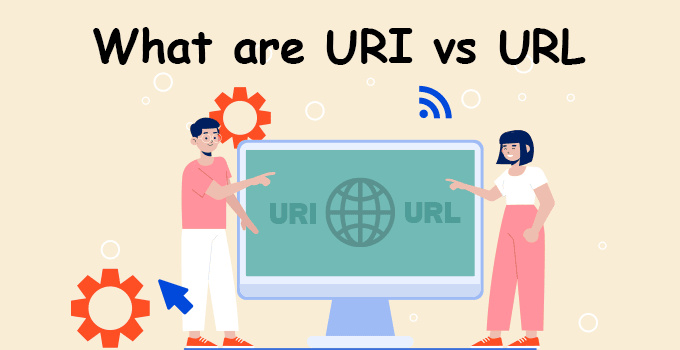
A Uniform Resource Identifier (URI) is a string that generally recognizes any web resource using a name, a location, or both sometimes. The primary purpose of a URI is to provide a consistent and universal way of identifying resources, regardless of their location or nature.
A URI consists of two main components: The Scheme and The Path. The scheme specifies the protocol or mechanism used to access the resource, while the path provides the unique address or identifier of the resource. For example, in the URI “https://www.example.com/page.html,” the scheme is “https,” and the path is “/page.html.”
A URL or a uniform resource locator is an identifier that only indicates the location of a web page. It refers to a web address and its access possibilities, such as HTTP, FTP, and mailto.
A URL consists of multiple components, including the scheme, host (domain name), port (optional), path, query parameters (optional), and fragment identifier (optional). For instance, in the URL “https://www.example.com/page.html?id=123#section1,” the scheme is “https,” the host is “www.example.com,” the path is “/page.html,” the query parameter is “id=123,” and the fragment identifier is “section1.”
Key Differences: URI vs URL
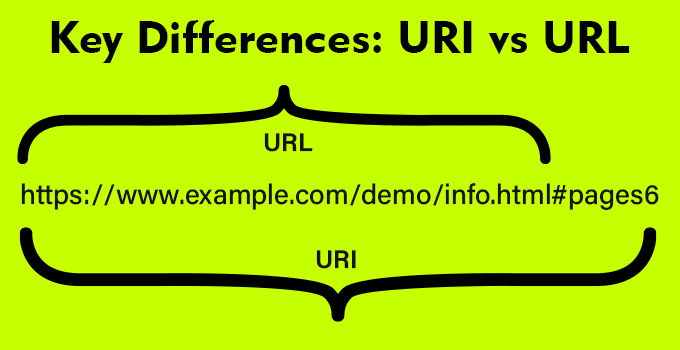
| URI | URL |
| URI stands for a Uniform Resource Identifier. | URL stands for a Uniform Resource Locator. |
| URI is the superset of a URN and a URL. | URL is the subset of URI. |
| URI identifies a resource and differentiates it from others by using a name, location, or both. | URL identifies the web address or location of a unique resource. |
| URI contains components like a scheme, authority, path, and query. | URL has similar components to a URI, but its authority consists of a domain name and port. |
| An example of a URI – ISBN URI: isbn:692-1-23-951160-0. | An example of a URL – https://www.kemuhost.com. |
| URI is usually used in XML, tag library files, and other files, such as JSTL and XSTL. | URL is mainly for searching web pages on the internet. |
| URI scheme can be a protocol, a specification, or a designation like HTTP, file, or data. | URL scheme is a protocol, such as HTTP and HTTPS. |
The key difference between URIs and URLs lies in their definitions and purposes. A URI is a broader concept that serves as a unique identifier for resources, irrespective of whether it provides the resource’s location. On the other hand, a URL is a specific type of URI that identifies the resource and offers the means to access it by providing the resource’s location.
We can use URIs in various contexts to identify resources, such as web pages, files, or abstract entities. You can use them for different purposes, including naming and resource identification. URLs, as a subset of URIs, are primarily used in web-based contexts where resources are accessed through the internet or an intranet. URLs play a crucial role in web development, linking web pages, and enabling navigation between different online resources.
When to Use URIs

URIs find essential applications when there is a need to identify resources without specifying their exact location or means of access. This is particularly useful when dealing with abstract or conceptual resources that may not be tied to a specific location.
URIs are useful to represent abstract or conceptual resources that may not have a direct physical or digital representation. These resources can be ideas, concepts, or even intangible entities. URIs allow these resources to be named and referenced consistently, making them accessible and recognizable in various contexts.
Examples of URIs
DOI (Digital Object Identifier): A DOI is a unique alphanumeric string assigned to a digital object, such as a research paper, article, or dataset. It serves as a persistent identifier for the object, ensuring its traceability and accessibility over time. DOIs are commonly used in academic publishing and research to provide a reliable and permanent link to scholarly content. Example: doi:10.1016/j.jbi.2021.103821
When to Use URLs

URLs are indispensable when there is a need to pinpoint resources at specific locations on the internet or intranet. They provide the complete address or pathway to access the resource, enabling precise identification and retrieval.
Example 1: A website’s URL provides a specific address to access the web pages hosted on that site.
URLs are useful in web-related contexts to access resources hosted on the World Wide Web. They enable users to navigate between different web pages, download files, interact with web services, and more.
Example 2: The URL of an image allows users to directly access and view that image on the internet.
Examples of URLs
HTTP/HTTPS URLs for websites
HTTP and HTTPS URLs are the most common type of URLs used to access websites. They allow users to access web pages, interact with web applications, and retrieve various types of digital content.
Example 1: https://www.kemuhost.com/web-hosting
File URLs for local resources
File URLs are used to access resources on the local file system. They help access files stored on the user’s device or server.
Example 2: file:///C:/Users/User/Documents/report.pdf
Common Misconceptions of URI vs. URL
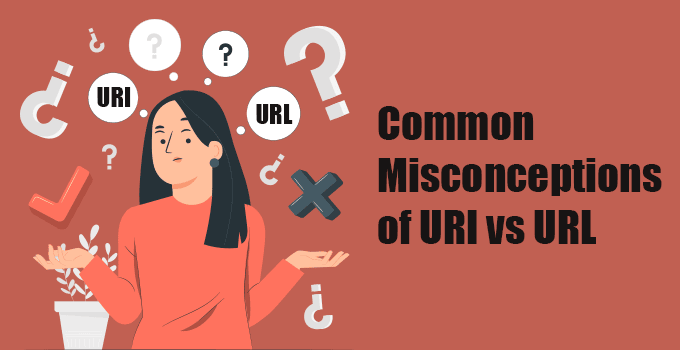
Many people think that URIs and URLs are interchangeable terms. But, as we have seen, all URLs are URI, but all URIs are not URLs. URIs act as identifiers for assets, while URLs go a step further by providing the resource’s location or address.
It is important to note that when your objective is to distinguish resources without specifying their location, URIs are the right choice. And URLs are appropriate when the goal is to pinpoint assets with explicit addresses regularly for electronic collaborations.
Best Practices for Using URI vs URL
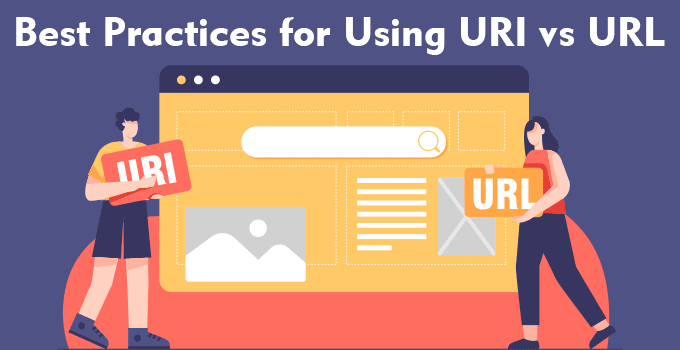
Understanding the distinction between URIs and URLs helps in picking the right type for various applications. While dealing with abstract resources or resources with multiple locations, URIs are the right choice. When you need to access the web resources and specify the exact locations, URLs are the best choice.
When using URIs or URLs in web content, it is essential to properly encode special characters to ensure that the browsers or servers interpret them correctly. If you make a mistake in encoding the characters, it can lead to broken links and accessibility issues.
Although URL shorteners are convenient for sharing long URLs, they can sometimes need clarification on the distinction between URIs and URLs. It is essential to be aware of this and ensure the underlying resource’s identification and location are still evident.
URI vs URL in Web Development

When it comes to web development, URIs and URLs play a fundamental role in structuring resources, creating APIs, and enabling interactions between different web services and applications.
Each programming language offers different libraries and in-built functions to handle URIs and URLs. Web developers must be familiar with these features to effectively manipulate and process URIs and URLs.
If you handle the URI and URL properly, you can eliminate security vulnerabilities such as URL manipulation, which can lead to unauthorized access or injection attacks. As a web developer, you must implement robust validation and sanitization practices to prevent such issues.
Conclusion
So, we now have a complete idea of URI and URL, their definitions, components, and applications. URIs act as unique identifiers for resources, while URLs provide the means to access those resources by specifying their locations.
Understanding the difference between URI vs URL is crucial to ensure proper identification, accessibility, and navigation of digital resources. Misusing or confusing these terms can lead to technical issues, broken links, and security vulnerabilities.
Please write to us in the comment box below if you have anything to share.


